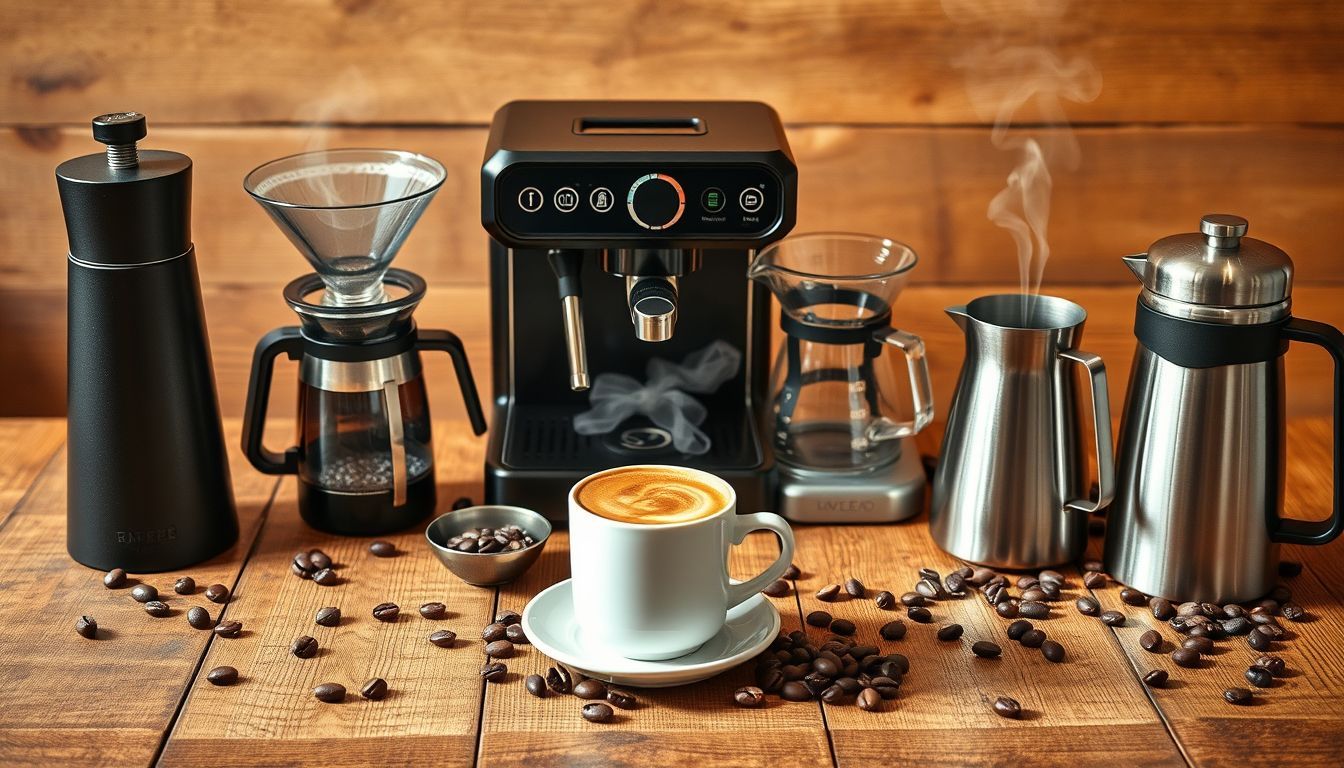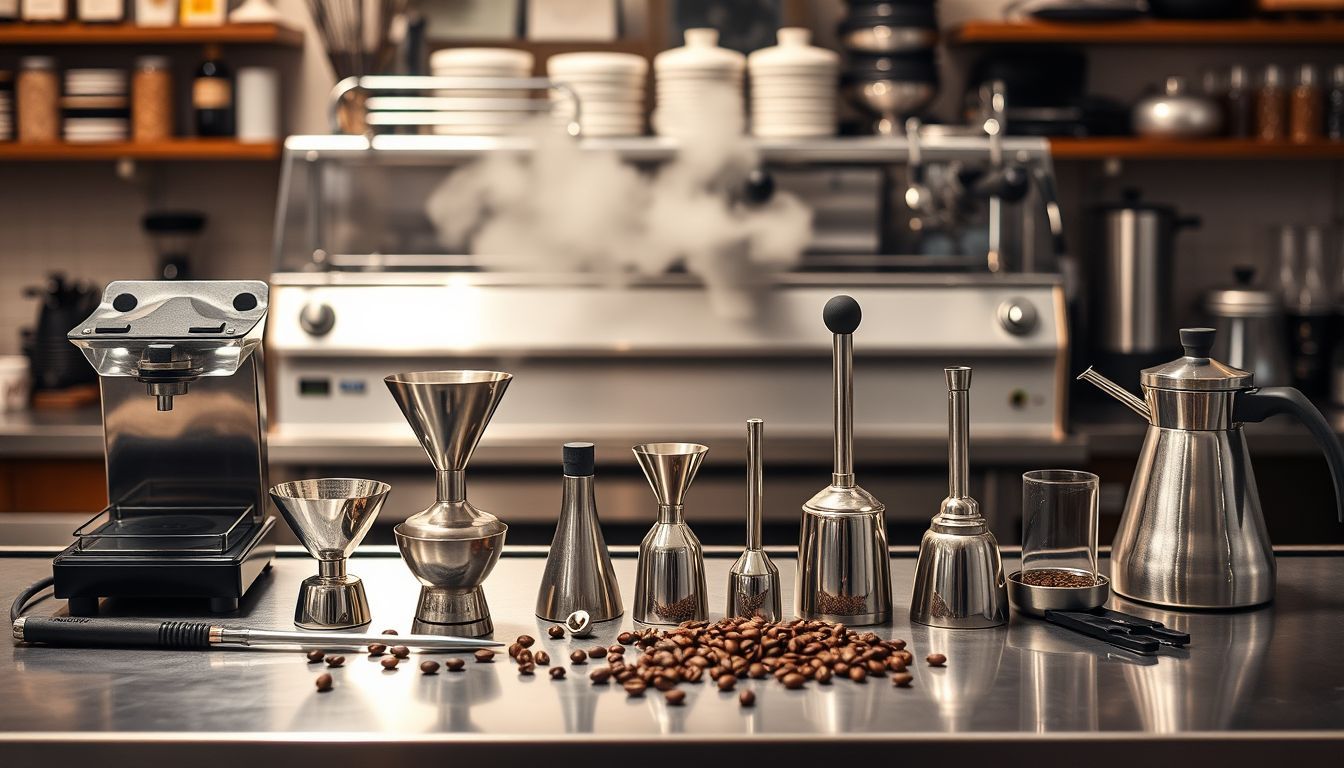The Science of Coffee Acidity: How Different Brewing Methods Enhance Brightness and Complexity
Explore how various brewing methods influence coffee's acidity, enhancing its brightness and complexity. Learn the science behind each technique and how to tailor your brew for optimal flavor.

Amazon Affiliate Disclosure
This post contains affiliate links. If you purchase through these links, we may earn a small commission at no additional cost to you.
Understanding Coffee Acidity
Acidity in coffee is a desirable characteristic that contributes to its brightness, complexity, and overall flavor profile. It manifests as a pleasant tartness or crispness, often described with fruity or citrusy notes. This acidity is primarily derived from organic acids present in coffee beans, such as citric, malic, and chlorogenic acids. The perception of acidity in your cup is influenced by several factors, including the coffee's origin, roast level, and, notably, the brewing method employed.
The Role of Brewing Methods in Coffee Acidity
Different brewing techniques can significantly alter the extraction of acids from coffee grounds, thereby affecting the perceived acidity in the final cup. Let's delve into how various methods impact this crucial aspect of coffee flavor.
Pour-Over Brewing
Impact on Acidity:
Pour-over methods, such as those using a Hario V60 or Chemex, are renowned for producing a clean and bright cup that accentuates acidity. The use of paper filters removes oils and fine particles, allowing the subtle acidic notes to shine through. The control over water flow and temperature in pour-over brewing helps to extract acids effectively without over-extracting bitter compounds. This method is particularly effective for highlighting the bright, lively notes that acidity brings to the cup. (dabov.us)
Optimization Tips:
- Grind Size: Use a medium-fine grind to ensure optimal extraction.
- Water Temperature: Maintain water temperature between 195°F to 205°F (90°C to 96°C) to enhance acid extraction.
- Pour Technique: Employ a slow, steady pour to allow even saturation and extraction.
French Press
Impact on Acidity:
The French Press method involves steeping coarsely ground coffee in hot water for an extended period, typically around four minutes. This immersion technique allows for a fuller-bodied coffee that captures fewer acids, resulting in a mellower flavor. The metal filter in a French press allows more oils and less sediment through, providing a different flavor profile that can mask acidity. (craftcoffeeblog.com)
Optimization Tips:
- Grind Size: Use a coarse grind to prevent over-extraction.
- Brewing Time: Steep for 4 minutes to balance extraction.
- Plunge Gently: Press the plunger down slowly to minimize agitation and avoid releasing unwanted bitter compounds.
Espresso
Impact on Acidity:
Espresso is a concentrated form of coffee brewed under high pressure, resulting in a robust and bold flavor with a high acidity and bitterness. The intensity of the acidity and bitterness in espresso can be affected by factors such as the type of beans, the roast level, the grind size, and the tamp pressure. (mountaintopgourmet.com)
Optimization Tips:
- Grind Size: Use a fine grind to ensure proper extraction.
- Tamping Pressure: Apply consistent pressure to achieve uniform extraction.
- Extraction Time: Aim for a shot time of 25-30 seconds to balance acidity and bitterness.
Cold Brew
Impact on Acidity:
Cold brew coffee is made by steeping coarsely ground coffee beans in cold water for an extended time, usually 12-24 hours. The resulting coffee has a smooth, mellow flavor with low acidity. The long steeping time of cold brew coffee allows for a lower extraction of acids and oils from the beans, resulting in a lower level of acidity. (mountaintopgourmet.com)
Optimization Tips:
- Grind Size: Use a coarse grind to prevent over-extraction.
- Steeping Time: Steep for 12-24 hours in the refrigerator.
- Dilution: Dilute the concentrate with water or milk to taste before serving.
AeroPress
Impact on Acidity:
The AeroPress is known for producing a clean, bright cup that can emphasize acidity. The short steeping time and pressure-assisted extraction help to extract acids without pulling out too many bitter compounds. Experimenting with inverted methods and different steep times can further enhance acidic notes. (dabov.us)
Optimization Tips:
- Grind Size: Use a medium-fine grind for balanced extraction.
- Brewing Time: Steep for 1-2 minutes before pressing.
- Water Temperature: Use water at 175°F to 185°F (80°C to 85°C) to control acidity levels.
Factors Influencing Acidity Beyond Brewing Method
While brewing techniques play a pivotal role, other factors also significantly impact coffee acidity:
- Bean Origin: Coffees from regions like Ethiopia and Kenya are often noted for their higher acidity.
- Roast Level: Lighter roasts retain more of the bean's natural acids, resulting in a brighter cup, whereas darker roasts tend to have reduced acidity.
- Water Quality: The mineral content and pH of brewing water can influence acid extraction and perception.
Conclusion
Understanding the interplay between brewing methods and coffee acidity empowers you to tailor your brewing process to achieve your desired flavor profile. Whether you prefer the bright notes highlighted by pour-over techniques or the mellow smoothness of a cold brew, mastering these methods allows you to enhance the brightness and complexity of your coffee experience. Experimenting with different techniques and variables will lead you to discover the perfect cup that suits your palate.

Marcus Thorne
As a journalist, I learned that the truth is often buried under layers of misinformation and time. As a novelist, I get to do the digging. Whether it's a forgotten event from the Cold War or a present-day conspiracy, I build my stories on a foundation of fact, inviting you to question what you think you know.


